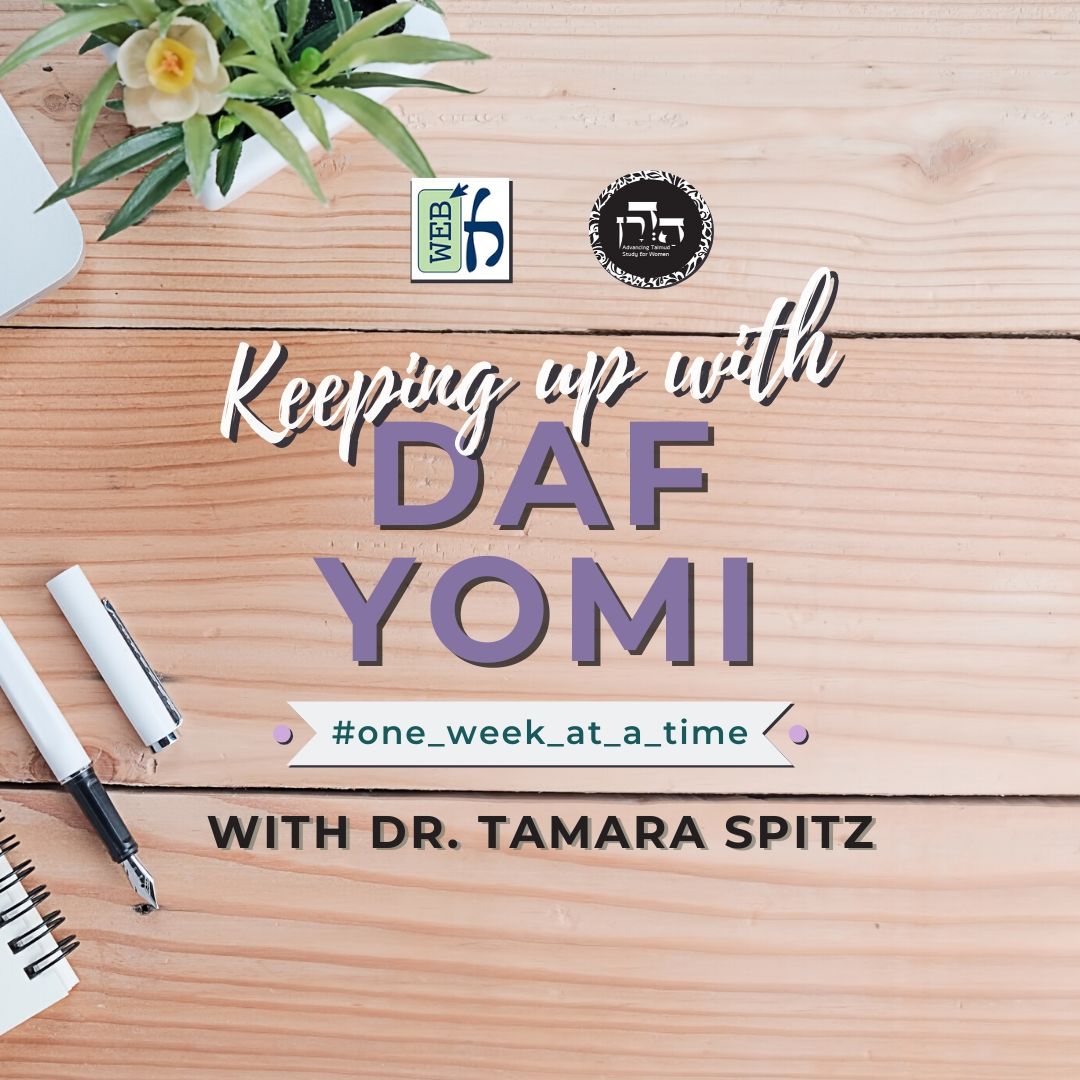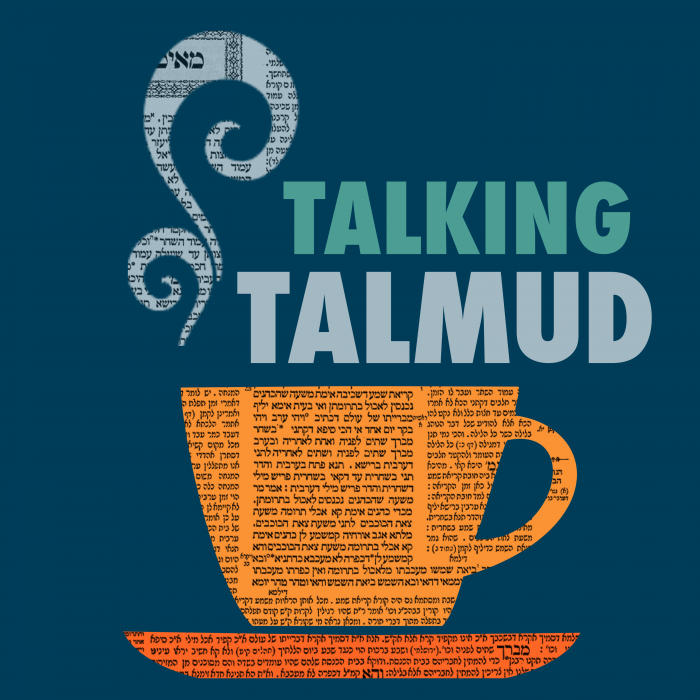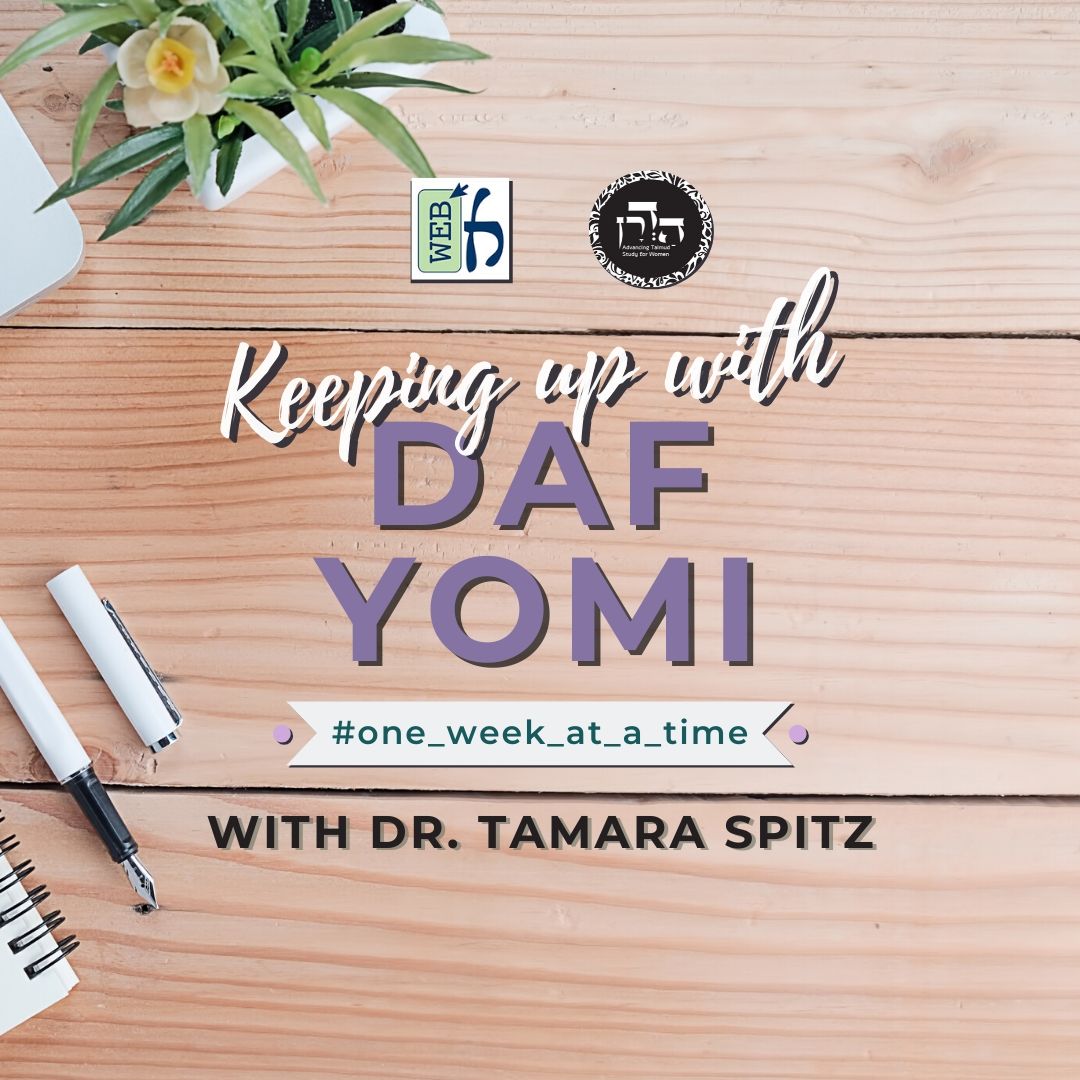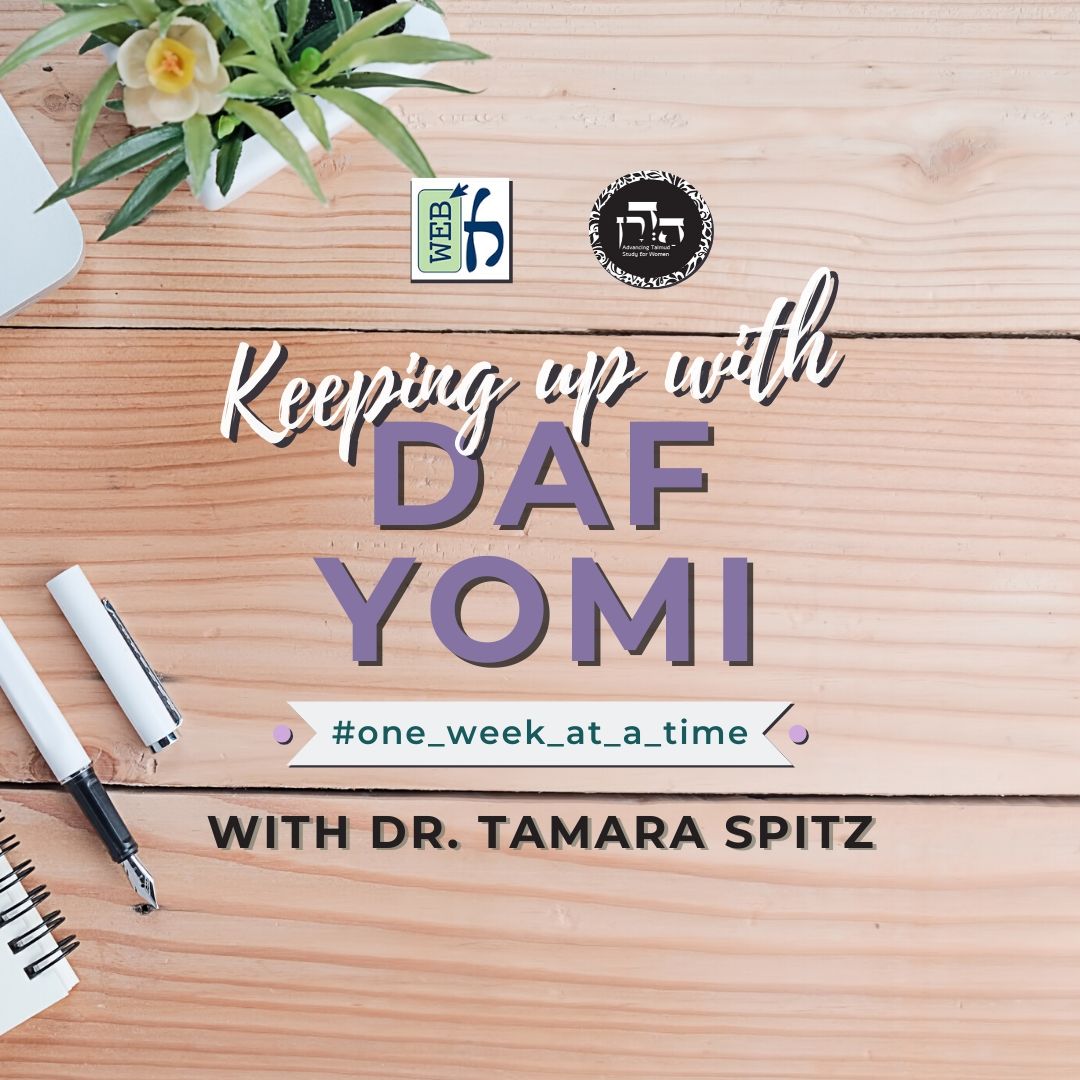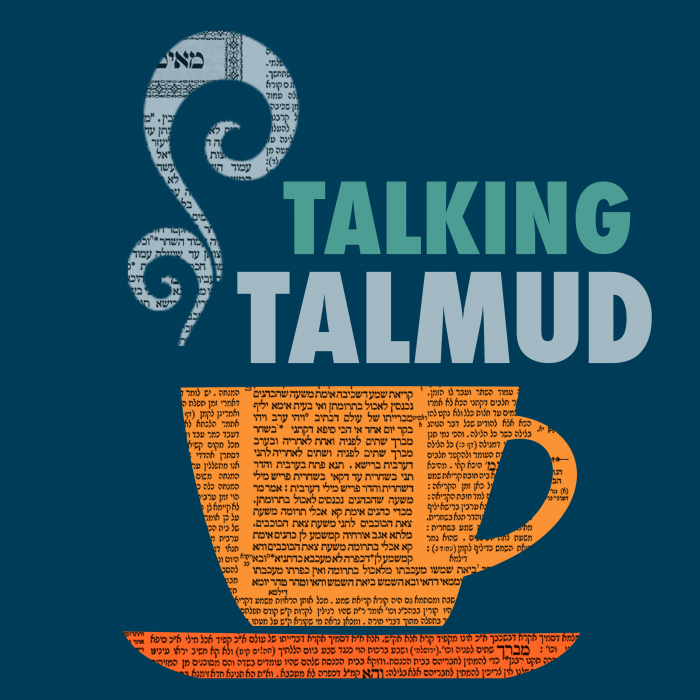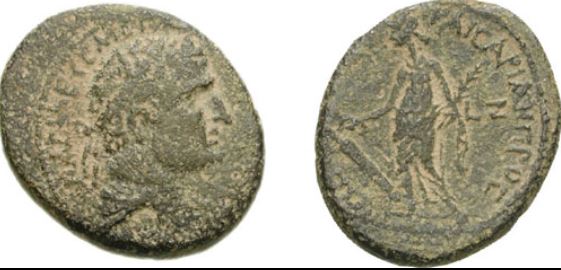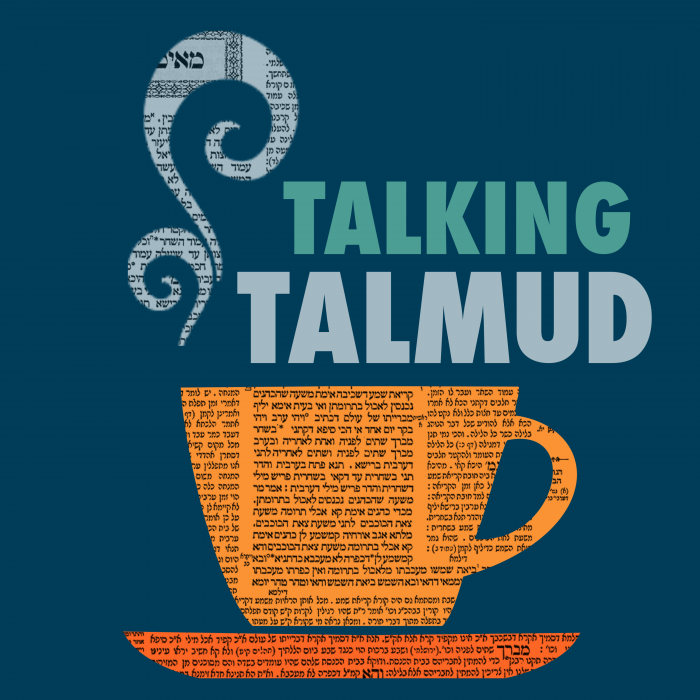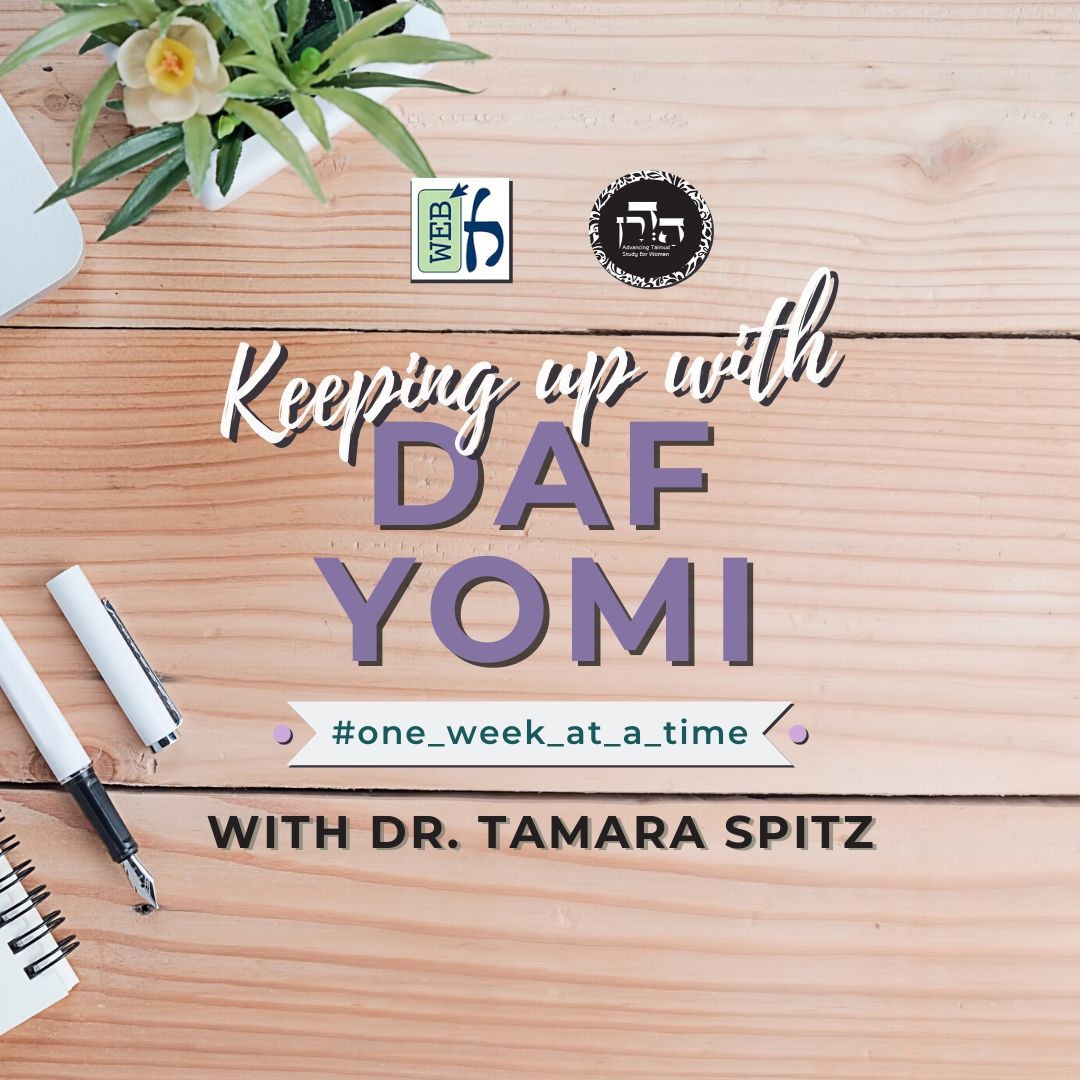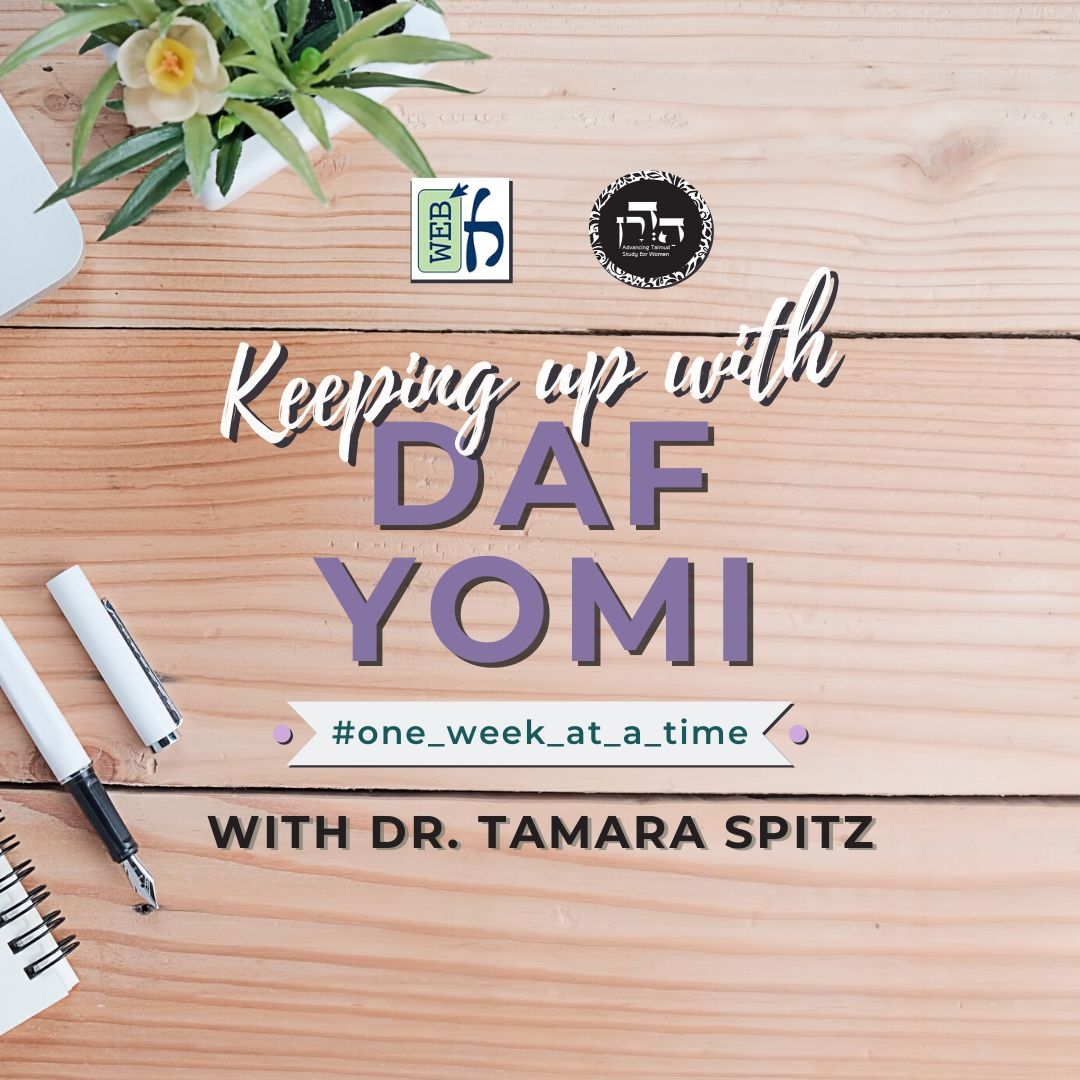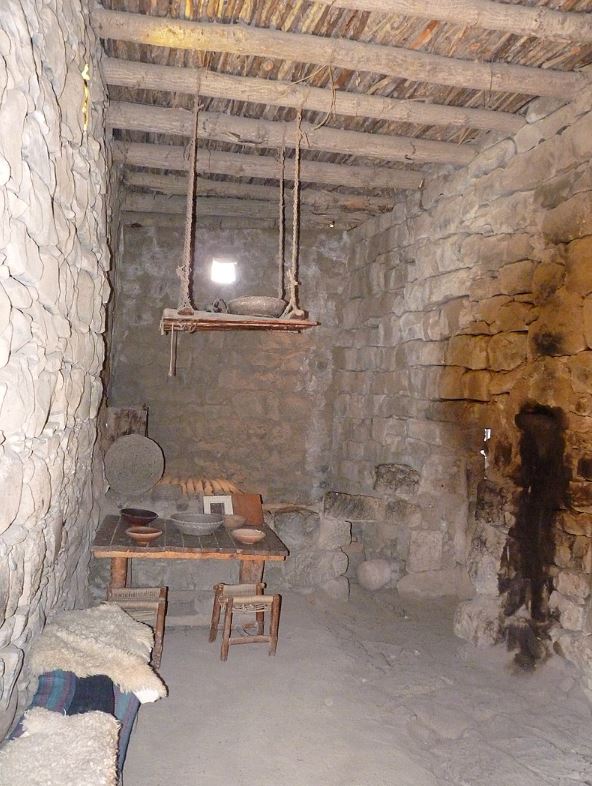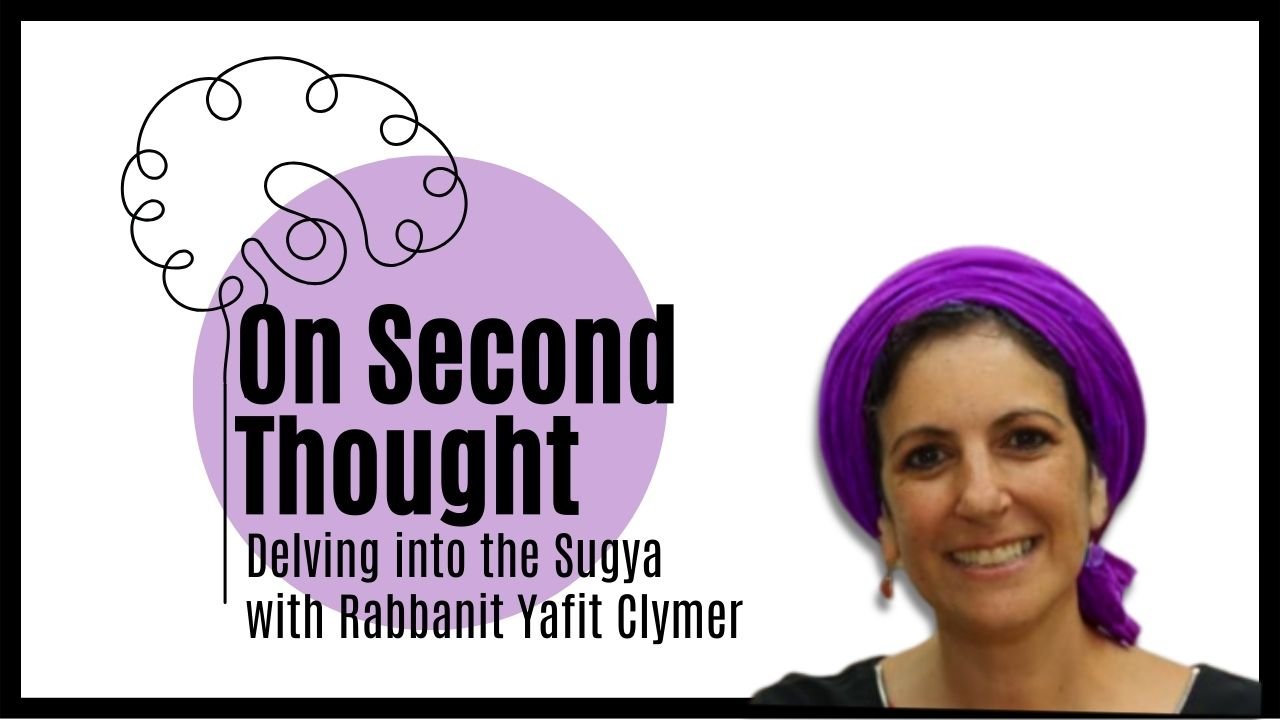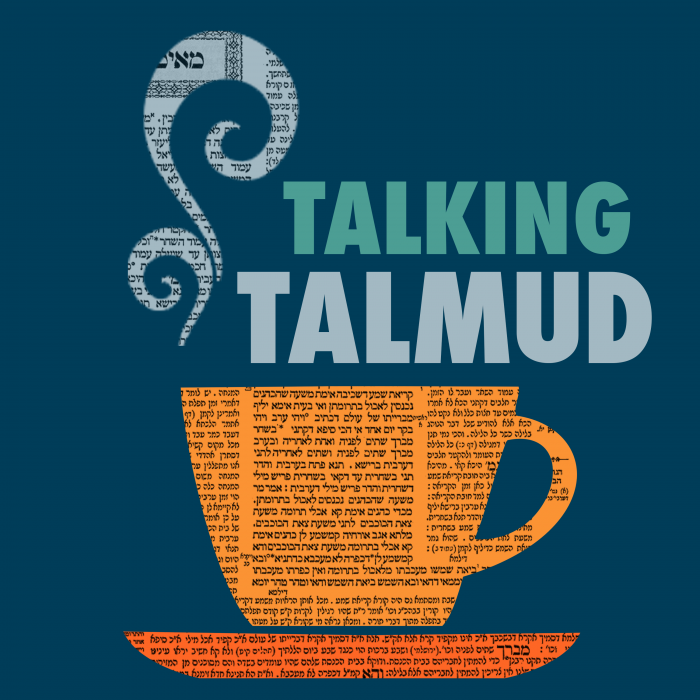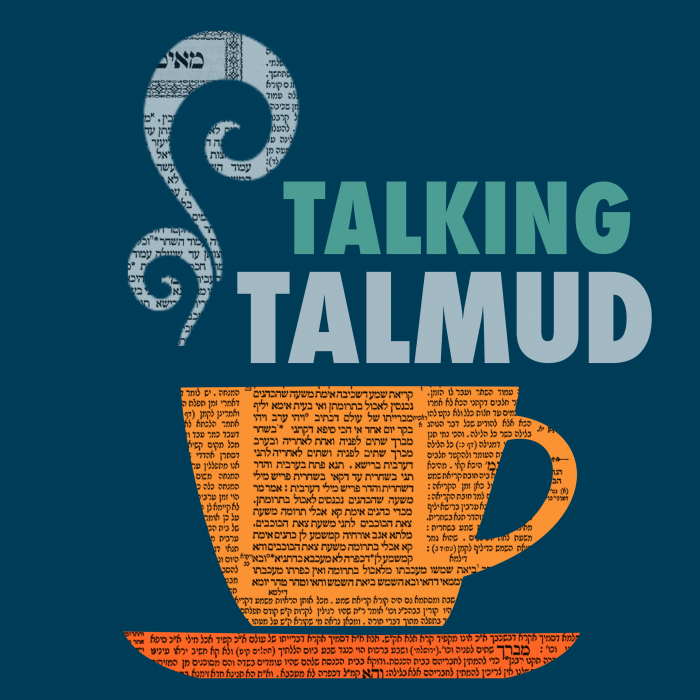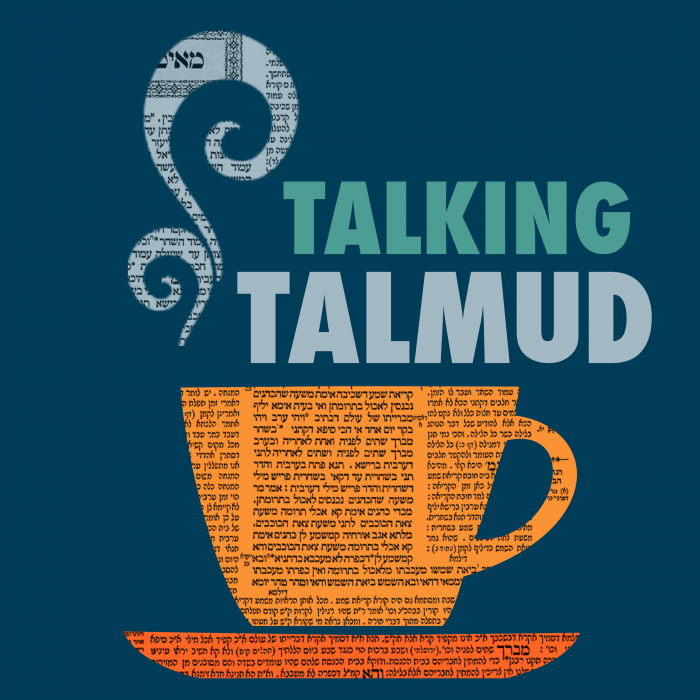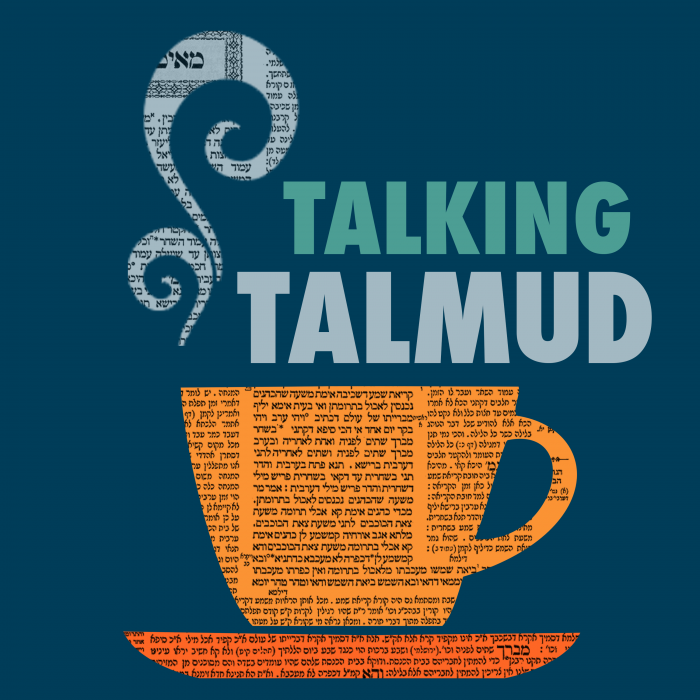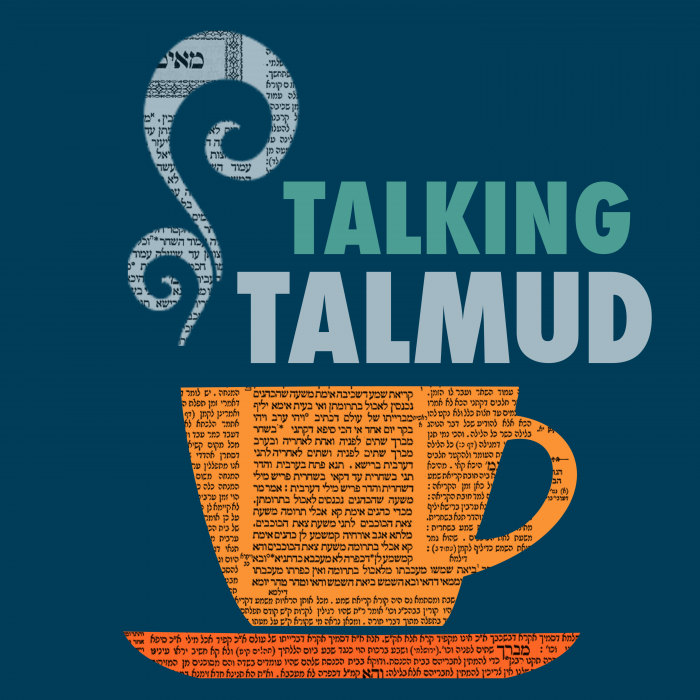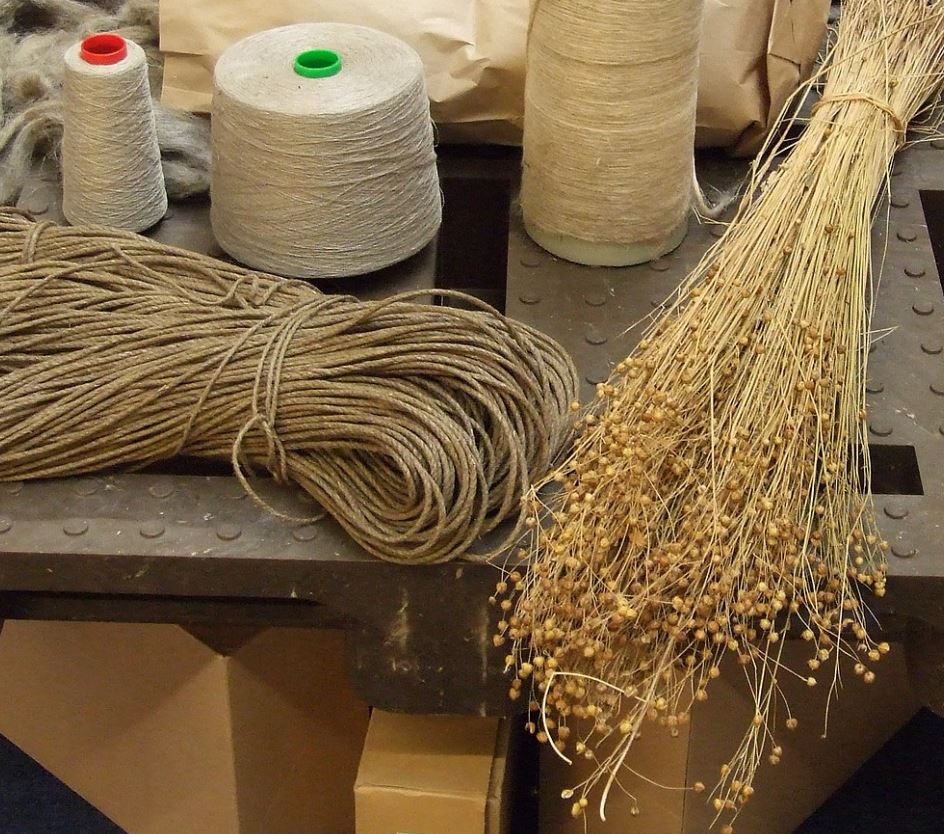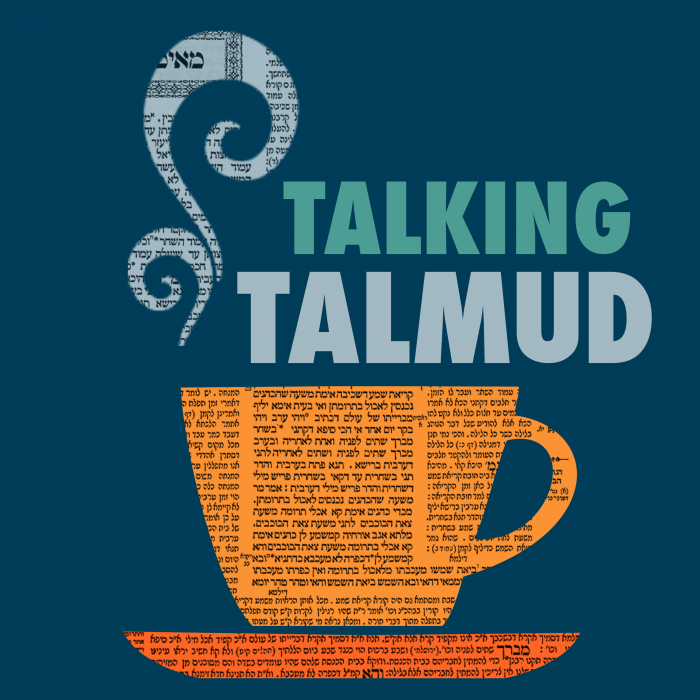This week’s learning is sponsored by Robert and Paula Cohen in loving memory of Joseph Cohen, Yosef ben Moshe HaCohen, z”l. “He was hard working, loved to sing, esp. as a chazan, and was very dedicated to his family and community.”
Want to dedicate learning? Get started here:


Today’s daily daf tools:
This week’s learning is sponsored by Robert and Paula Cohen in loving memory of Joseph Cohen, Yosef ben Moshe HaCohen, z”l. “He was hard working, loved to sing, esp. as a chazan, and was very dedicated to his family and community.”
Today’s daily daf tools:
Delve Deeper
Broaden your understanding of the topics on this daf with classes and podcasts from top women Talmud scholars.
New to Talmud?
Check out our resources designed to help you navigate a page of Talmud – and study at the pace, level and style that fits you.
The Hadran Women’s Tapestry
Meet the diverse women learning Gemara at Hadran and hear their stories.
Keritot 21
אוֹצִיא דַּם שְׁרָצִים – שֶׁאֵין בָּהֶם טוּמְאָה חֲמוּרָה. אוֹצִיא דַּם בֵּיצִים – שֶׁאֵין מִין בָּשָׂר, דַּם דָּגִים דַּם חֲגָבִים – שֶׁכּוּלּוֹ הֶיתֵּר.
I will likewise exclude the blood of creeping animals, which do not have a severe form of ritual impurity. Impurity transmitted to a person by the carcass of a creeping animal does not render clothing impure, whereas impurity transmitted by the carcass of an animal or bird does render one’s clothing impure. I will also exclude the blood of eggs, as they are not a type of meat, and finally I will exclude the blood of fish and the blood of grasshoppers, as they are entirely permitted, as explained on 21b.
״לָעוֹף וְלַבְּהֵמָה״? אִי מָה עוֹף שֶׁאֵין בָּהּ כִּלְאַיִם, אַף בְּהֵמָה – שֶׁאֵין בָּהּ כִּלְאַיִם! תַּלְמוּד לוֹמַר: ״וְלַבְּהֵמָה״.
The baraita continues: The verse states: “And you shall consume no manner of blood, whether it is of bird or of animal, in any of your dwellings” (Leviticus 7:26). The verse mentions both “bird” and “animal,” because if the verse had stated only “bird,” one might have said that just as a bird is a creature concerning which the prohibition of diverse kinds does not apply, as will be explained, so too, the prohibition against consuming blood applies only to an animal concerning which the prohibition of diverse kinds does not apply, whereas the blood of other animals is not forbidden. Therefore, the verse states: “Or of animal.”
אִי מָה בְּהֵמָה שֶׁאֵינָהּ בְּאֵם עַל הַבָּנִים, אַף עוֹף שֶׁאֵינוֹ בְּאֵם עַל הַבָּנִים! תַּלְמוּד לוֹמַר: ״לָעוֹף וְלַבְּהֵמָה״.
And if the verse had mentioned only “animal,” one might have said that just as an animal is not included in the prohibition against taking the mother bird with her young (see Deuteronomy 22:6–7), so too, a bird whose blood is forbidden is that which is not included in the prohibition against taking the mother bird with the young, i.e., non-kosher birds, whereas the blood of kosher birds is permitted. Therefore, the verse states: “Whether it is of bird or of animal.”
וְאֵימָא: ״כׇּל דָּם״ – כָּלַל, ״עוֹף וּבְהֵמָה״ – פָּרַט, כְּלָל וּפְרָט, אֵין בַּכְּלָל אֶלָּא מַה שֶּׁבַּפְּרָט, עוֹף וּבְהֵמָה – אִין, מִידִּי אַחֲרִינָא – לָא!
The Gemara raises a difficulty: But say that the verse should be interpreted as follows: The phrase “no manner of blood” is a generalization, and the mention of “bird or animal” is a detail. This is a generalization and a detail, and the hermeneutical principle in such cases is that the generalization includes only what is mentioned in the detail. Consequently, with regard to a bird and an animal, yes, it is prohibited to consume their blood, but with regard to anything else, the prohibition does not apply.
״נֶפֶשׁ אֲשֶׁר תֹּאכַל כׇּל דָּם״ – חָזַר וְכָלַל, כְּלָל וּפְרָט וְכָלַל, אִי אַתָּה דָן אֶלָּא כְּעֵין הַפְּרָט.
The Gemara explains that when the next verse states: “Whoever consumes any blood, that soul shall be cut off from his people” (Leviticus 7:27), it then generalized again. Therefore, this is a case of a generalization, and a detail, and a generalization, in which case the relevant hermeneutical principle dictates that you may deduce that the verse is referring only to items similar to the detail. Accordingly, the verse includes everything that has the following three components, as stated above: The capacity for both a light form of ritual impurity and a severe form of ritual impurity; the possibility of being forbidden or permitted; and categorization as a type of meat.
וְהָא לָא דָּמֵי כְּלָלָא בָּתְרָא לִכְלָלָא קַמָּא, כְּלָלָא קַמָּא לָאו, כְּלָלָא בָּתְרָא כָּרֵת!
The Gemara objects: But the last generalization is not similar to the first generalization. The first generalization, where it states: “You shall consume no manner of blood,” indicates a regular prohibition, punishable by lashes, whereas the last generalization, where it states: “That soul shall be cut off from his people,” indicates that the prohibition is punishable by karet. Consequently, the hermeneutical principle for cases of a generalization, a detail, and a generalization should not apply.
הַאי תַּנָּא דְּבֵי רַבִּי יִשְׁמָעֵאל [בְּרִיבּוּיֵי וּמִיעוּטֵי וּ]כְלָלֵי וּפְרָטֵי דָּרְשִׁינַן מִן הָדֵין גַּוְונָא, וְאַף עַל גַּב דְּלָא דָּמֵי כְּלָלָא בָּתְרָא לִכְלָלָא קַמָּא.
The Gemara responds: This tanna, whose opinion is recorded in this baraita, is of the school of Rabbi Yishmael, who maintains that we expound generalizations and details even in a case like this, even though the last generalization is not similar to the first generalization.
אָמַר מָר: כְּלָל וּפְרָט וּכְלָל אִי אַתָּה דָן אֶלָּא כְעֵין הַפְּרָט, מָה הַפְּרָט מְפוֹרָשׁ – דָּבָר שֶׁיֵּשׁ בּוֹ טוּמְאָה קַלָּה וְטוּמְאָה חֲמוּרָה, וְיֵשׁ בָּהֶ[ן] אִיסּוּר וְהֶיתֵּר וְיֵשׁ בָּהֶן מִין בָּשָׂר, אַף כׇּל דָּבָר שֶׁיֵּשׁ בּוֹ טוּמְאָה קַלָּה וְטוּמְאָה חֲמוּרָה וְכוּ׳.
The Gemara further analyzes the baraita. The Master said that there is a generalization, and a detail, and a generalization, and therefore you may deduce that the verse is referring only to items similar to the detail. Just as the detail is explicit in that it is referring to an item that has the capacity for both a light form of impurity and a severe form of impurity, and it has the possibility of being forbidden or permitted, and it is a type of meat, so too, every item that has the capacity for both a light form of ritual impurity and a severe form of ritual impurity, and has the possibility of being forbidden or permitted, and is a type of meat, is included in the prohibition against consuming blood.
״אַף כֹּל״ דְּקָתָנֵי לְאֵיתוֹיֵי מַאי?
The Gemara asks: What does this phrase: So too every item, which the baraita teaches, serve to include beyond birds and animals, which are mentioned explicitly in the verse? After all, the blood of human beings, creeping animals, fish, and grasshoppers have already been excluded from the prohibition.
אָמַר רַב אַדָּא בַּר אָבִין: לְאֵתוֹיֵי דָּמוֹ שֶׁל כּוֹי. מַאי קָסָבַר? אִי קָסָבַר כּוֹי סְפֵיקָא הוּא, אִיצְטְרִיךְ קְרָא לְמֵיסַר סְפֵיקָא? אֶלָּא קָסָבַר כּוֹי בְּרִיָּה בִּפְנֵי עַצְמוֹ הוּא.
Rav Adda bar Avin said: It serves to include the blood of a koy, an animal that is not definitively categorized as either a domesticated animal or an undomesticated animal. The Gemara asks: What does Rav Adda bar Avin maintain in this regard? If he maintains that a koy is an uncertain case, is a verse necessary to teach the halakha in a case of uncertainty? Rather, Rav Adda bar Avin maintains that the koy is a distinct entity, i.e., it is not in the category of domesticated animals or undomesticated animals, and therefore its halakha must be taught.
אַשְׁכְּחַן דָּמוֹ, חֶלְבּוֹ מְנָלַן? ״מִכׇּל חֵלֶב״. נִבְלָתוֹ מְנָלַן? ״מִכׇּל נְבֵלָה״.
The Gemara asks: We found a source for the prohibition against consuming the blood of a koy. From where do we derive that its fat is also forbidden? The Gemara answers that this is derived from the verse: “You shall not eat any [kol] fat” (Leviticus 7:23). The additional word “kol” serves to include the fat of a koy as being forbidden. The Gemara inquires further: From where do we derive that its carcass is prohibited? The Gemara answers that this is derived from the verse: “You shall not eat any [kol] animal carcass” (Deuteronomy 14:21). Here too, the additional word “kol” serves to include the carcass of a koy as being prohibited.
גִּיד הַנָּשֶׁה מְנָלַן? בְּכַף הַיָּרֵךְ תַּלְיֵהּ רַחֲמָנָא, וְהָא אִית לֵיהּ כַּף הַיָּרֵךְ.
The Gemara asks: From where do we derive that the sciatic nerve of a koy is prohibited? The Gemara answers that the Merciful One rendered the prohibition of the sciatic nerve dependent on the presence of the spoon of the thigh, as it is stated: “Therefore the children of Israel shall not eat the sciatic nerve which is upon the spoon of the thigh” (Genesis 32:33), and this koy has a spoon [kaf ] of the thigh, i.e., a round protrusion of flesh in its thigh that is shaped like a spoon.
טוּמְאָתוֹ וּשְׁחִיטָה, מְנָלַן? סְבָרָא, מִדִּלְכֹל מִילֵּי רַבְּיֵיהּ רַחֲמָנָא כִּבְהֵמָה, טוּמְאָתוֹ וּשְׁחִיטָתוֹ נָמֵי כִּבְהֵמָה.
The Gemara further asks: From where do we derive the impurity status of the carcass of a koy, and that ritual slaughter renders its meat permitted for consumption? The Gemara answers that these halakhot are derived by logical reasoning: From the fact that in all the matters mentioned above the Merciful One included the koy and rendered it like a domesticated animal, it is logical that the halakhot concerning its impurity and its slaughter are also like those concerning a domesticated animal.
אָמַר מָר: אוֹצִיא דַּם מְהַלְּכֵי שְׁתַּיִם, שֶׁיֵּשׁ בָּהֶן טוּמְאָה חֲמוּרָה וְאֵין בָּהֶן טוּמְאָה קַלָּה. וּרְמִינְהִי: הַחוֹתֵךְ מִן הָאָדָם – צָרִיךְ מַחְשָׁבָה וְהֶכְשֵׁר.
§ The Gemara continues to analyze the baraita. The Master said in the baraita: I will therefore exclude the blood of bipeds, as they have the capacity for a severe form of impurity, the impurity of a corpse, but they do not have the capacity for a light form of impurity, since the halakhot of the impurity of food do not apply to human flesh. But one can raise a contradiction from a mishna (Okatzin 3:2): With regard to one who cuts flesh from a living person for food, there are two conditions under which it becomes impure with the impurity of food: First, the flesh requires intent to eat it or feed it to others, and second, it must be rendered susceptible to impurity by coming into contact with water or one of the other six liquids that render food items susceptible to impurity.
וְקַשְׁיָא לַן: מַחְשָׁבָה לְמָה לִי? תֵּעָשֶׂה חֲתִיכָה שֶׁלּוֹ מַחְשָׁבָה! וְאָמַר רֵישׁ לָקִישׁ: בְּחוֹתְכוֹ לַכֶּלֶב, וּמַחְשָׁבָה לַכֶּלֶב לָאו מַחְשָׁבָה הִיא.
Before explaining the contradiction between this mishna and the baraita cited above, the Gemara seeks to clarify the mishna itself: And the following was difficult for us: Why do I need intent? Let his act of cutting serve as intent to eat the flesh. And Reish Lakish said: This is referring to one who cuts the flesh in order to feed it to a dog, and intent to feed it to a dog is not considered intent to use the flesh as food.
וְלָא? וְהָתְנַן, כְּלָל אָמְרוּ בְּטוּמְאָה: כֹּל הַמְיוּחָד לֶאֱכוֹל אָדָם – טָמֵא, עַד שֶׁיִּפָּסֵל מֵאֲכִילַת כֶּלֶב!
The Gemara asks: And is intent to feed a dog not considered intent to use the flesh as food? But didn’t we learn in a mishna (Teharot 8:6): The Sages stated a principle with regard to ritual impurity: With regard to any food that is assumed to be food designated for a person, once it becomes impure with the impurity of food, it remains impure until it is rendered unfit to be consumed by a dog?
הָהוּא לְאַסּוֹקֵי טוּמְאָה מִינֵּיהּ, דְּכֵיוָן דְּמֵעִיקָּרָא הֲוָה חֲזֵי לְאָדָם, לְאַסּוֹקֵי מִטּוּמְאָה עַד שֶׁיִּפָּסֵל מֵאֲכִילַת כֶּלֶב. הָכָא לְאַחוֹתֵי לֵיהּ טוּמְאָה, אִי חֲזֵי לְאָדָם – חֲזֵי לְכֶלֶב, אִי לָא חֲזֵי לְאָדָם – לָא חֲזֵי לְכֶלֶב.
The Gemara answers: That mishna is referring to removing impurity from it. Since the food was initially fit to be eaten by a person, its status of impurity cannot be removed from it until it is rendered unfit to be consumed by a dog. By contrast, here, with regard to one who cuts flesh, the mishna is referring to granting it susceptibility to impurity. In this case, if it is fit for a person then it is fit for a dog, i.e., it is susceptible to the impurity of food; if it is not fit for a person, it is not fit for a dog, i.e., it is not susceptible to ritual impurity.
מִכׇּל מָקוֹם קָתָנֵי מַחְשָׁבָה, וּמַחְשָׁבָה – לְטוּמְאָה קַלָּה הִיא! הָנֵי מִילֵּי מֵחַיִּים, אֲבָל לְאַחַר מִיתָה – טָמֵא הוּא טוּמְאָה חֲמוּרָה.
The Gemara addresses the contradiction between the mishna in Teharot and the baraita cited above: In any case, that mishna teaches that human flesh requires intent, and intent is for a light form of ritual impurity, i.e., this requirement of intent is necessary only for the flesh to become susceptible to ritual impurity as a food item. This apparently contradicts the claim of the baraita that the impurity of food items does not apply to human flesh. The Gemara answers: This statement of the mishna that human flesh is susceptible to impurity as a food item applies while the person is alive. But after death his corpse is impure by a severe form of impurity and is no longer susceptible to impurity as a food item, and that is the meaning of the baraita.
דִּכְווֹתַהּ גַּבֵּי בְּהֵמָה לְאַחַר מִיתָה, אִי בָּשָׂר – מְטַמֵּא טוּמְאָה חֲמוּרָה, וְאִם דָּם – מְטַמֵּא טוּמְאָה חֲמוּרָה,
The Gemara objects: The baraita contrasts animals, which are susceptible to both light and more severe forms of impurity, and people, who are susceptible only to severe ritual impurity, and the Gemara has explained the baraita as referring to a human being after death. But in the corresponding situation with regard to an animal after death, if one is referring to its meat, then it transmits impurity by a severe form of impurity, the impurity of a carcass, and if one is referring to its blood, it likewise transmits impurity by a severe form of ritual impurity, and not a light form of ritual impurity.
דִּתְנַן: דַּם נְבֵילוֹת – בֵּית שַׁמַּאי מְטַהֲרִין, וּבֵית הִלֵּל מְטַמְּאִין.
As we learned in a mishna (Eduyyot 5:1): With regard to the blood of animal carcasses, Beit Shammai deem it pure, and Beit Hillel deem it impure just like the carcass itself, which transmits severe ritual impurity. Why, then, does the baraita differentiate between people and animals and indicate that dead animals are susceptible to a light form of ritual impurity?
לֹא נִצְרְכָא אֶלָּא לִכְדִתְנַן: נִבְלַת בְּהֵמָה טְמֵאָה בְּכׇל מָקוֹם, נִבְלַת [הָ]עוֹף הַטָּהוֹר בַּכְּפָרִים – צָרִיךְ מַחְשָׁבָה, וְאֵין צָרִיךְ הֶכְשֵׁר.
The Gemara answers: The statement of the baraita that animals are susceptible to a light form of impurity after death while people are not is necessary only for that which we learned in a mishna with regard to the impurity of food (Okatzin 3:3): A carcass of a non-kosher animal, e.g., a horse or donkey, found in any location, and likewise an unslaughtered carcass of a kosher bird found in villages, where there are not many people and it is unlikely to be eaten, require express intent to be eaten in order for them to be considered food and susceptible to impurity of food. But they are not required to come into contact with a liquid in order to be rendered susceptible to impurity.
נִבְלַת בְּהֵמָה טְהוֹרָה בְּכׇל מָקוֹם, וְנִבְלַת עוֹף טָהוֹר וְחֵלֶב בַּשְּׁוָקִים – אֵין צְרִיכִין לֹא מַחְשָׁבָה וְלֹא הֶכְשֵׁר.
By contrast, the carcass of a kosher animal anywhere, and the unslaughtered carcass of a kosher bird or forbidden fat found in marketplaces, will presumably be eaten, and therefore they require neither intent to be eaten nor contact with liquid in order to be rendered susceptible to impurity.
וַאֲמַר לֵיהּ רַב לְרַבִּי חִיָּיא: מַחְשָׁבָה, לְמָה לִי לְטוּמְאָה קַלָּה? הִיא גּוּפַהּ טוּמְאָה הִיא! אֲמַר לֵיהּ: כְּגוֹן דְּאִיכָּא פָּחוֹת מִכְּזַיִת נְבֵילָה, וְצֵרְפָהּ לְפָחוֹת מִכְּבֵיצָה אוֹכָלִין, דְּהַאי וְהַאי הָוֵי כְּבֵיצָה.
And Rav said to Rabbi Ḥiyya: Why do I need intent for a carcass to be eaten so that it will be considered food and therefore susceptible to the impurity of food, which is a light form of ritual impurity? After all, the carcass itself is already impure with a severe form of impurity. Rabbi Ḥiyya said to Rav: It is necessary for a case where there is less than an olive-bulk of the carcass, which is not susceptible to the impurity of a carcass, and one combined it with less than an egg-bulk of food, so that this and that together are an egg-bulk, which is the minimum amount of food that is susceptible to food impurity.
אִי הָכִי, לִיבְעֵי נָמֵי הֶכְשֵׁר, דְּהָא תָּנָא דְּבֵי רַבִּי יִשְׁמָעֵאל: ״עַל כׇּל זֶרַע [זֵרוּעַ] אֲשֶׁר יִזָּרֵעַ״ – מָה זְרָעִים מְיוּחָדִין שֶׁאֵין סוֹפָן לְטַמֵּא טוּמְאָה חֲמוּרָה וְצָרִיךְ הֶכְשֵׁר, אַף כֹּל שֶׁאֵין סוֹפָן לְטַמֵּא טוּמְאָה חֲמוּרָה צָרִיךְ הֶכְשֵׁר!
Rav raised a difficulty to Rabbi Ḥiyya: If so, that less than an olive-bulk of an animal carcass does not transmit impurity, it should also require contact with a liquid in order to be rendered susceptible to impurity as a food. As the school of Rabbi Yishmael taught that with regard to the impurity of foods, the verse states: “Upon any sowing seed which is to be sown” (Leviticus 11:37), which teaches: Just as seeds are unique in that they will not ultimately become impure with a severe form of ritual impurity and they require contact with liquid in order to be rendered susceptible to impurity, so too, anything that will not ultimately become impure with a severe form of ritual impurity requires contact with liquid in order to be rendered susceptible to impurity.
אֲמַר לֵיהּ: הָנֵי מִילֵּי בָּאוֹכָלִין דְּעָלְמָא, דְּלֵית בְּהוּ פָּחוֹת מִכְּזַיִת נְבֵלָה, אֲבָל הָכָא, דְּאִיכָּא בְּגַוֵּיהּ פָּחוֹת מִכְּזַיִת נְבֵילָה, כֵּיוָן דְּאִילּוּ מְצָרֵף לֵיהּ כְּזַיִת – לָא בָּעֵי הֶכְשֵׁר.
Rabbi Ḥiyya said to Rav: This statement applies to foods in general, which do not contain less than an olive-bulk of an animal carcass. But here, where the food does contain less than an olive-bulk of an animal carcass, the halakha is different: Since it would be impure with a severe form of ritual impurity if one were to add to the amount of animal carcass so that there would be a full olive-bulk, it does not require contact with a liquid in order to be rendered susceptible to impurity. In any case, this halakha that less than an olive-bulk of a carcass combines with less than an egg-bulk of food to equal a full egg-bulk that is susceptible to food impurity, applies only to the flesh of an animal,
לְאַפּוֹקֵי מֵת, אַף עַל גַּב דִּמְמַלֵּיא לֵיהּ – לָא מְטַמֵּא טוּמְאַת אוֹכָלִין, מִשּׁוּם דְּבָטְלָה דַּעְתּוֹ אֵצֶל כׇּל אָדָם.
to the exclusion of less than an olive-bulk of a human corpse. With regard to a human corpse, even if one completes its amount to an egg-bulk, it does not become impure by the impurity of food, because his intention is rendered irrelevant by the opinions of all other people, since people do not eat human corpses. This explains why the baraita stated that animals are susceptible to light and severe forms of ritual impurity whereas people are susceptible only to severe ritual impurity.
רַב חֲנַנְיָא אָמַר: אֲפִילּוּ תֵּימָא דְּהָוֵי כְּזַיִת, הָכָא בְמַאי עָסְקִינַן? כְּגוֹן שֶׁחִיפָּהוּ בְּבָצֵק.
Rav Ḥananya said: With regard to the assertion that the carcass of a non-kosher animal becomes susceptible to the impurity of food only if one intends to eat it, you may even say that the piece of the carcass is an olive-bulk. What are we dealing with here? We are dealing with a case where one covered it with less than an egg-bulk of dough. Since it is covered with dough the carcass cannot come into contact with anything else in order to transmit impurity to it, and since there is less than an egg-bulk of dough, the dough itself is not susceptible to the impurity of food. But if the carcass and the dough combined are a full egg-bulk, they are susceptible to the impurity of food and can transmit that impurity to other food items.
אִי הָכִי, הֶכְשֵׁר נָמֵי נִיבְעֵי! הָנֵי מִילֵּי בָּאוֹכָלִין אַחֲרִינֵי, דְּלָא מְטַמּוּ לָא בְּמַגָּע וְלָא בְּמַשָּׂא. אֲבָל הָכָא, נְהִי דְּלָא מְטַמֵּא בְּמַגָּע, דְּקָמְחַפֵּי בְּבָצֵק, בְּמַשָּׂא מִיהַת לִיטַמֵּא, דְּהָא טָעֵון לֵיהּ.
The Gemara objects: If so, let it also require contact with a liquid in order to be rendered susceptible to the impurity of food. The Gemara responds: That statement applies with regard to other kinds of food, which do not transmit impurity at all, neither through direct contact nor through carrying. But here, granted that the piece of animal carcass does not transmit impurity through contact, as it is covered with dough, it should at least transmit impurity through carrying, as it is laden upon him, despite the fact that he does not touch it.
לְאַפּוֹקֵי מֵת, דְּאַף עַל גַּב דְּחִיפָּהוּ בְּבָצֵק מְטַמֵּא טוּמְאָה חֲמוּרָה, דְּטוּמְאָה בּוֹקַעַת וְעוֹלָה בּוֹקַעַת וְיוֹרֶדֶת.
According to Rav Ḥananya, it is in this regard that a light form of impurity, the impurity of food, applies to an animal after death. This is to the exclusion of a human corpse, as even if one covered it with dough it transmits a severe form of ritual impurity, as the impurity of a corpse breaks through and ascends, and breaks through and descends, even when it is covered.
אָמַר מָר: יָצְאוּ שְׁרָצִים שֶׁאֵין בָּהֶן טוּמְאָה. וְלָא? שֶׁרֶץ מְטַמֵּא בְּמַגָּע! בְּמַשָּׂא לָא מְטַמֵּא.
§ The Gemara continues to analyze the baraita cited above (20b–21a). The Master said: The blood of creeping animals has been excluded, as they do not have a severe form of impurity. The Gemara asks: And do creeping animals not have a severe form of impurity? After all, by Torah law the carcass of a creeping animal transmits impurity through contact. The Gemara answers that even so, it does not transmit impurity through carrying, in the manner of an animal carcass.
אָמַר מָר: יָצָא דַּם דָּגִים וְדַם חֲגָבִים שֶׁכּוּלּוֹ הֶיתֵּר. מַאי כּוּלּוֹ הֶיתֵּר? אִילֵימָא דְּחֶלְבּוֹ מוּתָּר – הֲרֵי חַיָּה דְּחֶלְבָּהּ מוּתָּר וְדָמָהּ אָסוּר! וְאֶלָּא: מִשּׁוּם דְּלֵית בְּהוּ אִיסּוּר גִּיד הַנָּשֶׁה? וַהֲרֵי עוֹף דְּלֵית בֵּיהּ אִיסּוּר גִּיד הַנָּשֶׁה, וְדָמוֹ אָסוּר!
The Master said in the baraita: The blood of fish and the blood of grasshoppers have been excluded, as they are entirely permitted. The Gemara asks: What is the meaning of the clause: They are entirely permitted? If we say it is referring to the fact that all the fat of fish and grasshoppers is permitted, one may respond that all the fat of an undomesticated animal is also permitted, and yet its blood is forbidden.And if you say: Rather, fish and grasshoppers are referred to as entirely permitted because the prohibition of the sciatic nerve does not apply to them, this is also untenable; but in the case of a bird there is no prohibition against eating the sciatic nerve and even so, its blood is forbidden.
אֶלָּא מַאי כּוּלּוֹ הֶיתֵּר – דְּלָא בָּעֵי שְׁחִיטָה.
Rather, what is the meaning of the statement that fish and grasshoppers are entirely permitted? This is referring to the halakha that fish and grasshoppers do not require ritual slaughter to permit their consumption.
אָמַר מָר: מָה עוֹף שֶׁאֵין בּוֹ כִּלְאַיִם, אַף בְּהֵמָה – תַּלְמוּד לוֹמַר: ״בְּהֵמָה״.
The Master said in the baraita: If the verse had stated only “bird,” one might have said that just as a bird is a creature with regard to which the prohibition of diverse kinds does not apply, so too, the prohibition of consuming blood applies only to an animal that is not subject to the prohibition of diverse kinds, whereas the blood of other animals is not forbidden. Therefore, the verse states: “Of animal.”
כִּלְאַיִם דְּמַאי? אִילֵּימָא כִּלְאַיִם דְּהַרְבָּעָה וְכִלְאַיִם דַּחֲרִישָׁה, וְהָתְנַן: חַיָּה וָעוֹף כַּיּוֹצֵא בָּהֶן!
The Gemara asks: To which form of diverse kinds is this referring? If we say that it is the prohibition against mating diverse kinds together, or the prohibition against plowing diverse kinds together, that is difficult: But didn’t we learn in a mishna (Bava Kamma 54b): Similarly, undomesticated animals and birds are subject to the same halakhot as them, i.e., just as it is prohibited to plow with or to mate two species of domesticated animals together, the same applies to undomesticated animals and birds. Consequently, these prohibitions apply to all animals.
אֶלָּא אָמַר אַבָּיֵי: שֶׁצִּימְרוֹ אֵין חַיָּיבִין עָלָיו מִשּׁוּם כִּלְאַיִם.
Rather, Abaye said that the baraita is referring to its wool, i.e., its feathers, and indicating that one is not liable for mixing it with linen due to the prohibition of diverse kinds. The prohibition of diverse kinds in clothing applies only to mixing sheep wool with linen, but not to the hair or feathers of other animals and birds.
אָמַר רַב יְהוּדָה אָמַר רַב: דַּם שְׁרָצִים לוֹקִין עָלָיו בִּכְזַיִת. מֵיתִיבִי: דַּם הַטְּחוֹל, דַּם הַלֵּב, דַּם הַכְּלָיוֹת, דַּם אֵבָרִים – הֲרֵי אֵלּוּ בְּלֹא תַעֲשֶׂה. דַּם מְהַלְּכֵי שְׁתַּיִם, דַּם שְׁרָצִים וּרְמָשִׂים – אָסוּר, וְאֵין חַיָּיבִין עָלָיו!
§ Rav Yehuda says that Rav says: With regard to the blood of creeping animals, one is flogged for consuming it in the amount of an olive-bulk. The Gemara raises an objection from a baraita: With regard to blood of the spleen, blood of the heart, blood of the kidneys, and blood of limbs, all these are forbidden for consumption by a regular prohibition, punishable by lashes, but their consumption is not punishable by karet. By contrast, the blood of bipeds, i.e., human beings, and the blood of creeping animals and crawling things are forbidden but one is not liable for their consumption. This indicates that one is not even flogged for consuming the blood of creeping animals.
מַאי אֵין חַיָּיבִין עָלָיו – כָּרֵת, אֲ[בָל]
The Gemara answers: What is the meaning of the clause: One is not liable for its consumption? It means that one is not liable to receive karet for consuming it, but one is liable for violating a prohibition.
חֲדָא, דְּהַיְינוּ רֵישָׁא. וְעוֹד, תַּנָּא מִלָּאו נָמֵי קָא מְמַעֵט לֵיהּ, דְּקָתָנֵי: יָצָא דַּם שְׁרָצִים, שֶׁאֵין בָּהֶן טוּמְאָה חֲמוּרָה!
The Gemara challenges this answer: One reason this is not a good explanation is that this is the same as the first clause. The first clause of the baraita lists types of blood whose consumption is a violation of a regular prohibition and is not punishable by karet. Clearly, the latter clause cannot also be referring to types of blood in the same category. And furthermore, a tanna excludes consumption of this blood from a regular prohibition as well, as the baraita cited earlier teaches: The blood of creeping animals has been excluded, as it does not have a severe form of ritual impurity.
אָמַר רַבִּי זֵירָא: הִתְרוּ בּוֹ מִשּׁוּם שֶׁרֶץ – לוֹקֶה, מִשּׁוּם דָּם – אֵינוֹ לוֹקֶה.
Rabbi Zeira said: When Rav said that one is flogged for consuming the blood of creeping animals, he meant that if witnesses forewarned him that if he consumes the blood he will be liable due to the prohibition of eating a creeping animal, then he is flogged. The reason is that the prohibition against eating a creeping animal includes its blood. But if they forewarned him that he will be liable due to the prohibition of consuming blood, he is not flogged.
אָמַר רַב: דַּם דָּגִים שֶׁכִּינְּסוֹ – אָסוּר. מֵיתִיבִי: דַּם דָּגִים, דַּם חֲגָבִים – מוּתָּר, וַאֲפִילּוּ לְכַתְּחִלָּה! הָהִיא בְּשֶׁלֹּא כִּינְּסוֹ, כִּי קָא אָמַר רַב – בְּשֶׁכִּינְּסוֹ.
§ Rav says: Fish blood that one collected in a receptacle is prohibited for consumption because it would look as though one is consuming the blood of an animal or bird. The Gemara raises an objection from the latter clause of the baraita cited above: The blood of fish and the blood of grasshoppers are permitted, and this indicates that they are permitted even ab initio. The Gemara answers: That baraita is referring to a case where he did not collect the blood in a receptacle; when Rav said that it is prohibited, he was referring to a situation where he did collect the blood in a receptacle.
דִּכְווֹתַהּ גַּבֵּי מְהַלְּכֵי שְׁתַּיִם – בְּשֶׁלֹּא כִּינְּסוֹ, מִי אָסוּר? וְהָא תַּנְיָא: דָּם שֶׁעַל גַּבֵּי כִּכָּר – גּוֹרְרוֹ וְאוֹכְלוֹ, שֶׁל בֵּין הַשִּׁינַּיִם – מוֹצְצוֹ וּבוֹלְעוֹ וְאֵינוֹ חוֹשֵׁשׁ!
The Gemara challenges this answer: In the corresponding situation with regard to the blood of bipeds, which the baraita states is forbidden, the case must also be one where one did not collect the blood in a receptacle. In such a case, is the blood really forbidden? But isn’t it taught in a baraita: If some human blood was on a loaf of bread, one scrapes off the blood and then he may eat the bread. But with regard to blood that is between one’s teeth, he may suck it and swallow it without concern, as the blood is permitted if it has not been removed from the body. This indicates that even human blood that has not been collected in a receptacle is permitted.
אֶלָּא: כִּי תַּנְיָא הַהִיא מַתְנִיתָא – דְּאִית בֵּיהּ קַשְׂקַשִּׂים, כִּי קָאָמַר רַב אָסוּר – דְּלֵית בֵּיהּ קַשְׂקַשִּׂים.
Rather, the baraita rules that fish blood is permitted even when it has been collected in a receptacle, and when that baraita is taught, it is referring to a case where there are scales in it and therefore it is clearly fish blood. By contrast, when Rav said that it is prohibited, he was referring to a case where there are no scales in the blood, and therefore it is not evident that it is fish blood.
אָמַר רַב שֵׁשֶׁת: דַּם מְהַלְּכֵי שְׁתַּיִם – אֲפִילּוּ מִצְוַת פְּרוֹשׁ אֵין בּוֹ. מֵיתִיבִי: דַּם הַטְּחוֹל, דַּם הַלֵּב, דַּם הַכְּלָיוֹת, דַּם אֵבָרִים – הֲרֵי אֵלּוּ בְּלֹא תַעֲשֶׂה. דַּם מְהַלְּכֵי שְׁתַּיִם, דַּם שְׁרָצִים וּרְמָשִׂים – אָסוּר וְאֵין חַיָּיבִ[ין] עָלָיו! כִּי תַּנְיָא אָסוּר –
Rav Sheshet says: With regard to the blood of bipeds, there is not even a command to abstain from consuming it ab initio. The Gemara raises an objection from the baraita: Blood of the spleen, blood of the heart, blood of the kidneys, and blood of limbs, all these are forbidden for consumption by a regular prohibition. By contrast, the blood of bipeds, i.e., human beings, and the blood of creeping animals and crawling things are forbidden but one is not liable for their consumption. The Gemara answers: When it is taught in that baraita that human blood is forbidden, that is referring to a case


